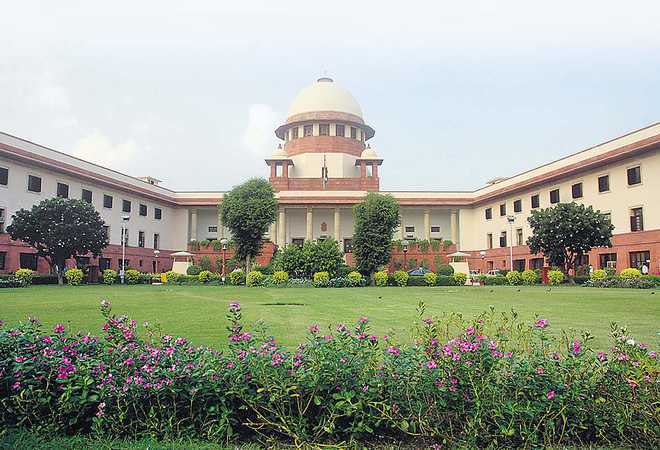New Delhi, Sep 28: The Supreme Court on Saturday set up a five-judge Constitution bench head by Justice N V Ramana to hear a batch of pleas related to abrogation of Article 370 provisions that gave special status to Jammu and Kashmir.
The Bench will begin hearing the matter from October 1.
From the beginning of next month, the bench will commence hearing to examine the constitutional validity of the scrapping of the article’s provisions and the subsequent presidential orders on it, an official source said.
While referring to the batch of petitions to the Constitution bench, a bench headed by Chief Justice Ranjan Gogoi in August had said the larger bench will commence hearing on the issue in the first week of October.
Several petitions have been filed challenging the Centre’s decision abrogating the Article 370 provisions and bifurcating the state into Union Territories of Jammu and Kashmir, and Ladakh.
The UTs will come into being on October 31.
Petitions have also been filed by the National Conference, the Sajjad Lone-led Peoples Conference and several other individuals, including the first plea filed by advocate ML Sharma.
Besides the bench for hearing Article 370 matters, the apex court has also constituted a three-judge bench for hearing matters on capital punishment and two other benches, comprising two judges each, to hear tax matters.
The petitions challenging the abrogation of Article 370 will be heard by a Constitution Bench headed by Justice NV Ramana. The other judges on the Bench will be Justices Sanjay Kishan Kaul, R Subhash Reddy, BR Gavai and Surya Kant.
Justice Sanjay Kishan Kaul, who is ethnically a Kashmiri, is on the Bench to decide the issue. Three of the Judges on the Bench, Justices NV Ramana, BR Gavai, and Surya Kant are future Chief Justices of India.
A three-Judge Bench of Chief Justice of India, Ranjan Gogoi, and Justices SA Bobde and S Abdul Nazeer had on August 28, referred the issue to a five-Judge Constitution Bench.
The first petition in this regard was filed by advocate ML Sharma.
Subsequently, a Kashmiri lawyer, Shakir Shabir had approached the Supreme Court of India challenging the Presidential Order of August 5. It was his argument that amendment to Article 367 which resulted in the scrapping of Article 370 could not have been done in the manner in which it was done. It could have been done only by the Parliament.
Subsequently, two Lok Sabha MP, Mohammad Akbar Lone and Hasnain Masoodi belonging to the Jammu & Kashmir National Conference Party had approached the Supreme Court challenging the Presidential Order of August 5.
Further, retired Military Officers and bureaucrats have also filed a petition in the Supreme Court of India challenging the Presidential Orders.
Besides the above, notice has also been issued in a petition filed by Soayib Qureshi, a permanent resident of Jammu and Kashmir and a practising lawyer in the Supreme Court.
The first step to the removal of Article 370 came on August 5, when the Constitution (Application to Jammu & Kashmir) Order, 2019, was introduced to supersede the Constitution (Application to Jammu & Kashmir) Order, 1954. The 1954 Order had listed out provisions of the Constitution of India that would not apply to Jammu and Kashmir.
In its place, the 2019 Order introduced on Monday provided that all provisions of the Constitution of India will apply to the state of Jammu and Kashmir, with a few exceptions and modifications.
Though the power to abrogate or modify Article 370 was conferred with the President under clause (3) of the Article, there was a pre-condition to the same – concurrence by the Constituent Assembly of the State of Jammu & Kashmir. The Constituent Assembly had, however, ceased to exist as far back as in the 1950s.
In order to get over this hurdle, the Presidential Order under challenge here, had amended Article 367 to replace the reference to Constituent Assembly under Article 370(3) to mean Legislative Assembly.
Subsequently, the President had issued another order on August 6 making Article 370 redundant.
The Presidential Order of August 5 also paved the way for the introduction of the Jammu & Kashmir Reorganisation Act, 2019 which bifurcated the State of Jammu and Kashmir into two Union Territories – Union Territory of Jammu & Kashmir, and Union Territory of Ladakh.
(Except for the headline, this story has not been edited by The Kashmir Monitor staff and is published from a syndicated feed.)
Discover more from The Kashmir Monitor
Subscribe to get the latest posts to your email.




